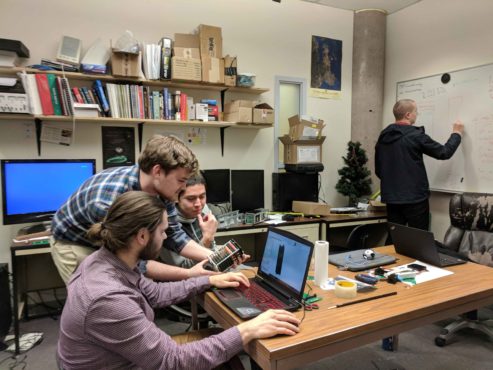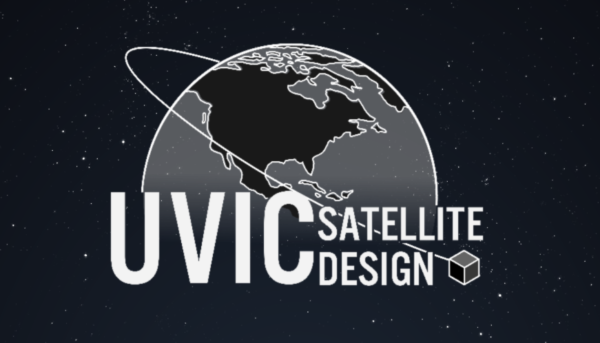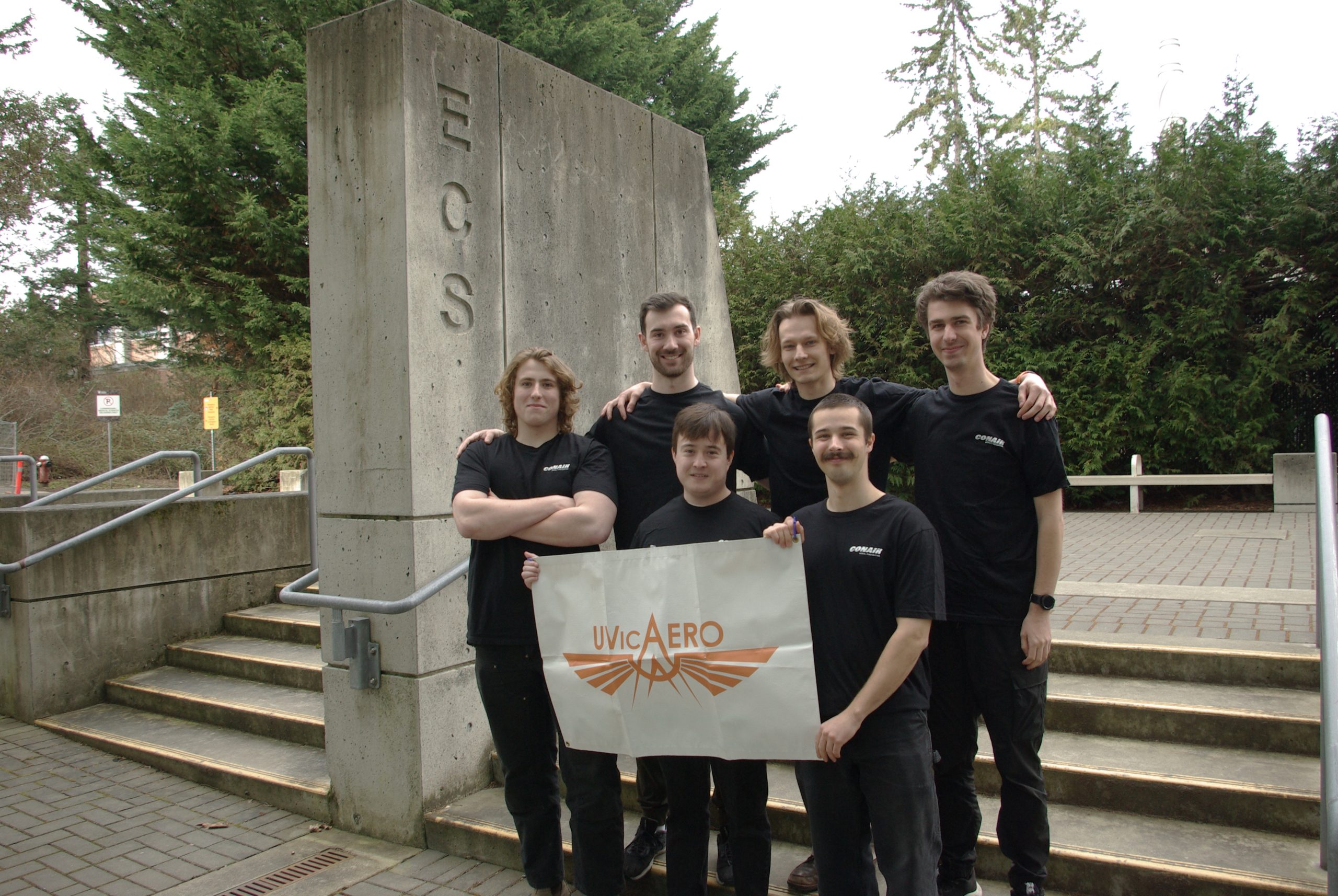Next satellite project launches with equipment for dark energy research
Not many students know that UVic has its own Satellite Design Club that builds satellites with important scientific payloads for launch.
Forty-five active members of the UVic Satellite Design Club, sitting in a club room in the engineering building that gives off a homey, lived-in, start-up vibe, work with three main ideas: developing next generation space technologies, providing hands-on experience for students, and inspiring the public about space in general.
The desks of their office space are cluttered with a multitude of complex tech prototypes and parts, including some from their latest and greatest project, ORCA2SAT (the Optical and Radio Calibration of Atmospheric Attenuation CubeSat). ORCA2SAT is a collaborative effort between UVic, UBC, SFU, and the Technical Institute of Lisbon to design a cube satellite (known as a CubeSat) to carry multiple payloads.
ORCA2SAT started as a proposal to the Canadian Space Agency’s (CSA’s) Canadian CubeSat Project. The project saw the CSA reach out to Canadian universities and present the opportunity for 13 winning teams to build a funded satellite that was guaranteed to launch into space. The Satellite Club also works with Dr. Justin Albert from UVic’s Physics department who originally designed the satellite’s concept and is the club’s faculty advisor.

Members of the UVic Satellite club work on their projects. Photo by Angel Manguerra, Staff Writer
The goal of the ORCA2SAT satellite is to provide the scientific community with a more accurate method to measure the light emitted from stars and to help make huge contributions to dark energy research.
In simple terms, dark energy is what causes our universe to expand and it is measured by how quickly this expansion is happening. The expansion of the universe is measured using the light from specific stars, called standard stars. Using the data from the light, the ever-increasing distance between the standard stars and Earth is calculated. However, these standard stars don’t always give the best answers.
“When [the light] travels through the atmosphere you get some loss due to attenuation [the loss of waves in earth’s atmosphere],” Bryce Edwards, the Satellite Club’s Project Manager, says. “So what we’re trying to do is provide a better measurement of these standard stars by providing a source of calibration to correct for atmospheric interference.”
To do this, the satellite contains a payload of four different lasers that can be detected by telescopes on the ground. Once in space, the satellite beams down reference data that tells observers the exact amount of light emitting from the lasers.
A telescope reads the measurement from the satellite’s lasers and finds out what amount of light is being lost due to fluctuations in the atmosphere. Then, it compares that to the reference data from the stars that is also being sent by the satellite.
“So what we do is attach we essentially provide a light source in low-Earth orbit. The observatory then takes a measurement of this light source — say we’re giving off, like, 150 lumens and they measure 120 lumens, then we know that there’s a loss of 30 lumens there,” Edwards explains. “Then they can apply that to their other measurements at that point in time for stars.”
By having the measurements from both the lasers and the reference data, the satellite effectively provides the telescope with an accurate calibration method to measure the light from stars.
In other words, ORCA2SAT is trying to remedy one of the biggest systematic uncertainties in measuring the expansion rate of the universe.

Screenshot via UVic Satellite Club’s website
Firing lasers and beaming signals may sound simple, but it takes a lot of special consideration when designed specifically for outer space.
Alex Doknjas, a mechanical engineering student on the team, leads the integration of the satellite’s mechanical systems. His job is to make sure that everyone’s individual tech will work perfectly with the entire satellite.
Doknjas explains the three biggest challenges with designing for outer space.
First, there is a lack of a steady energy source, since batteries die out eventually and solar cells are unreliable in low earth orbit (where there are day and night cycles).
Second, overheating and cooling become issues because there is no air circulation in space. (This requires all the electronics on the satellite to run on low power and produce very little heat.)
The final problem is caused by a phenomenon called outgassing — gases escaping from materials because of pressure differences. Since space is a vacuum (with very low pressure), certain materials lose their strength because of outgassing in space for extended times.
“The main challenge, that isn’t specific to building satellites, is just the size of it.” says Doknjas, “You have to fit a lot of stuff into such a small structure. So you have to go to a really high-level of integration which isn’t really good for space applications because you have stuff like radiation and thermal cycling. So it’s easier to build things more robust, but they take up more space. There’s a huge trade-off there.”
Half of all first-time CubeSats fail during launch, but the Satellite Design team is determined to break that statistic. Their goal now is to get their satellite successfully up in space, functioning and ready to go.
“You can stick [the satellite] in a vacuum chamber and suspend it [and] you can do a bunch of stuff to kind of get an idea if it’s working,” Doknjas points out, “but you will never, actually, truly get there unless you put it to space.”
Thanks for reading! If you enjoyed this article and would like to make sure we keep writing articles like it, please consider supporting us on the Martlet 70 fundraiser’s GoFundMe page.
If you hated the article, though, you should still donate to the GoFundMe page (so we can hire better writers).







